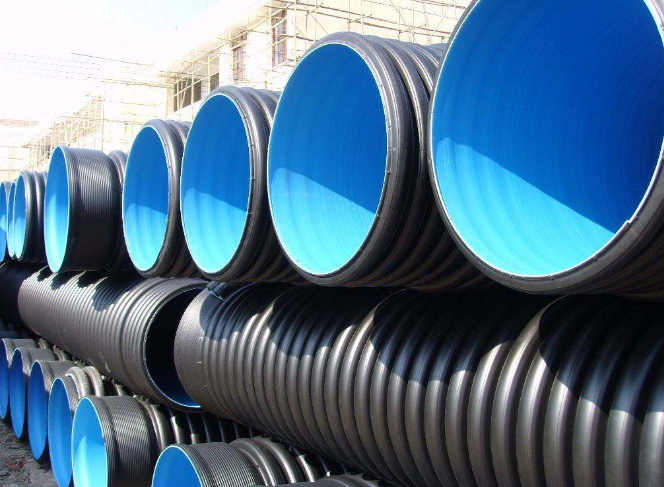Drainage pipes used metal at the beginning, with the progress of technology, began to appear a variety of different materials. The traditional drainage method can not completely meet the needs of modern buildings, and the application of siphon stormwater pipe is an effective way to solve the problem of large area roof drainage of modern buildings.
Siphon drainage system
Since its birth in Europe, the siphon drainage system has developed rapidly and improved continuously in the global scope by virtue of its outstanding advantages. In China, with the increasing number of large-span and large-area buildings and the increasing requirement for building space, the siphon drainage system has been developed rapidly after it has been successfully applied in some airports and exhibition halls.
Siphon drainage pipe advantage
The technical principle of siphon drain pipe:
China HDPE parts factory claimed that the technical principle of the siphon drainage system is to use the height difference of the building to form different heights of the water surface, and then use the rainwater tank design to carry out the gas-water separation project and make the HDPE siphon rainwater pipe overflow state.
When the water in the HDPE siphon pipe is in a state of pressure flow, it will siphon. It can be seen that the siphon phenomenon is extremely rapid for drainage. Today, the HDPE siphon drainage system has been widely used in modern construction projects, because the siphon drainage pipe breaks the traditional gravity drainage, the siphon drainage system is the use of rainwater tank design for the separation of air and water engineering.

HDPE siphon Drain stands out:
In all the materials of drainage pipes, HDPE material with its light use, strong corrosion resistance and thus on a bit stand out, gradually replaced other drainage pipes, is widely used in a variety of siphon drainage systems.
Compared with traditional stormwater systems, HDPE siphon drainage systems have tiny pipe diameter, large displacement, fewer risers, and minor impact on the building facade and space.
Technical Principles
The siphon drain pipe typically uses high-density polyethylene PE pipe. The biggest difference between PE pipe and general gravity drain pipe is that when the drainage is at a large flow rate, the unit drainage area of PE siphon drain pipe is roughly 80% larger than that of gravity drain pipe with the same drainage diameter.
The structure of HDPE siphon drainpipe and gravity drainpipe is not very different, in the whole drainage system is composed of rain hopper, rain suspension pipe, rain riser, rain buried pipe, and the siphon drainpipe is siphon, the core is the rain hopper, PE siphon drainpipe rain hopper has excellent rectification function, At its rated design flow rate, the rainwater tank is in the submerged discharge state, so there is no problem of infiltration of bubbles.
PE siphon drain does not need to make platform inclined plane, because as long as the water level exceeds the top line of siphon drainage, it will produce siphon phenomenon, the nearby water source will be "sucked" into the drain, which on the one hand can improve the drainage capacity, on the other hand, because the water into the drain is sufficient, so there is no gas doping in it, so when the water flow, It doesn't create turbulence, which can lead to two bad things. The first is that it creates a lot of noise and vibration in the pipeline.
HDPE siphon drain pipe Note:
1, HDPE siphon rainwater pipe as the most essential part of the siphon rainwater system, must ensure that the system is safe, reliable, efficient and sustainable operation.
2, siphon stormwater pipe must ensure complete sealing and complete fire prevention measures, and do as much as possible to reduce noise, absorb vibration, resist the impact of external force, the maximum degree to meet the deformation caused by temperature shift. Complete leakage resistance of the pipe does not mean that the system tightness is satisfied.
3, HDPE siphon rainwater pipes and accessories must have flame retardant conditions, when the building a fire system can prevent the fire from being quickly transferred to the different parts of the building. Therefore, the flame retardant of the material itself is not the most significant, the fire spread of the whole pipeline siphon storm pipe is the key to minimizing the disaster losses.
With the continuous development of building technology, the demand for industrial plants and warehouses is increasing. The requirements for roof rainwater drainage technology will be more stringent, but also promote the development of improved drainage technology. The increase in the roof area, the drainage pipe must also increase the number of pipes, which will definitely affect the building aesthetic and practical requirements.